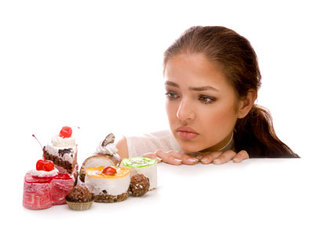 Healthier Choices and what your Body really needs!! IF YOU’RE CRAVING: CHOCOLATE You could be lacking magnesium in your diet. Magnesium is an essential mineral involved in energy production, glucose metabolism, and muscle function. This is especially true for those hitting the gym hard. INSTEAD, REACH FOR high-quality, low-sugar dark chocolate. I recommend sticking to 75% cocoa or higher, and pairing it with another magnesium-rich source like sunflower seeds. My personal favorite is Hu, which is a little pricey, but all the more reason to keep portions in check. IF YOU’RE CRAVING: CANDY Craving pure sugar is a good indication that you’re running low on energy. Think about it. What is the one thing you’re itching for, after a terrible night’s sleep, or at around 4p during a stressful workday? The answer is usually sugar, because it’s used as instant fuel for our body’s cells. INSTEAD, REACH FOR if you’re raiding your co-workers’ Candy stash, I recommend a more slow-burn carbohydrate with a source of fat or protein. Unlike simple sugar, this will fuel your cells while avoiding the post-sugar crash. Two options that make for great pick-me-ups: apples with nut butter, or berries with 2% unsweetened Greek yogurt. IF YOU’RE CRAVING: SALTY If nothing but the saltiest pickle will do, you may not be drinking enough H2O. Salt helps the body hold on to water, so we crave it when we’re in need of fluids. INSTEAD, REACH FOR water. Stay hydrated, especially as we approach the summer months. If plain water bores you, try adding in mint, lemon, or frozen fruit to mix it up. And if you’re really just craving salt after all, toasted seaweed is a great low calorie option. IF YOU’RE CRAVING: STARCHY CARBS LIKE BREAD, BAGELS, AND PASTA Since high-carb foods boost the feel-good hormone serotonin, starch cravings can be a sign you’re in need of a mood booster. INSTEAD, REACH FOR: a bath. Bust out the Epsom salts, it’s time for some serious R+R. Trust me. Indulging in a starch free-for-all feels really good in the moment and not so good the next day. IF YOU’RE CRAVING: RICH CREAMY DAIRY Your body may be telling you it’s in need of some healthy fat. INSTEAD, REACH FOR I’m a realist, so if you’re craving ice cream, I’m not going to recommend a handful of walnuts, which are, of course, full of healthy fat. For ice-cream emergencies I recommend lower-in-sugar coconut ice-creams like Coconut Bliss. IF YOU’RE CRAVING: A BURGER If you can’t stop thinking about red meat, there’s a chance you’re your body is craving iron, b12 and folic acid. This is especially true during or around that time of the month. INSTEAD, REACH FOR I’m a proponent of grass fed, antibiotic and hormone-free red meat 1x week. Try experimenting with an open-faced bison burger, which, cut for cut, is leaner and has more iron than beef. Content provided by www.drpia.com
3 Comments
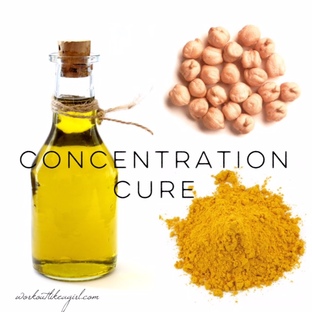 Food For Thought! Want to help yourself to concentrate better! Here's a quick snack to help you do just that! 1 can chick peas + 1 tbsp. turmeric + 1 tbsp. olive oil = Better Processing Chickpeas are rich in B vitamins, which help reduce brain cell shrinkage and offer up a slow yet steady source of carbs to keep your mind focused. The spice adds an antioxidant and anti-inflammatory kick to enhance brain performance and fight Alzheimer's. Drain the chickpeas, toss them with turmeric and oil, spread out on a backing sheet and bake at 425 degrees for at least 15 minutes - long if you want more crunch. Yields (3) 1/2 cup servings. 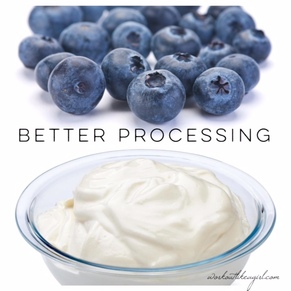 Food For Thought! Want to help yourself to process information better! Here's a quick snack to help you do just that! 1 cup plain yogurt + 1/2 cup blueberries = Better Processing Thanks to blueberries' potent flavonoids, eating at least one 1/2-cup serving a week of this superfood delays mental aging by up to TWO and a HALF years, according to research! The yogurt (look for one with less than 10 grams of sugar per serving) provides potassium, to improve blood flow, and probiotics, which promote health belly bacteria and protect the gut's lining. 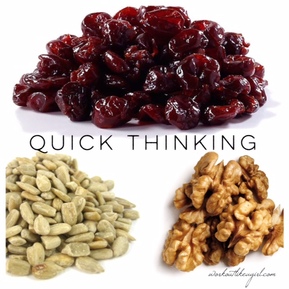 Food For Thought! Want to help yourself to think fast on your feet! Here's a quick snack to help you do just that! 7 halved walnuts + 1 tbsp. sunflower seeds + 2 tbsp. dried cherries = Quick Thinking The ingredients in this homemade trail mix burst with anti-inflammatory agents that improve brain function. Omega-3 fatty acids in walnuts have also been shown to boost learning and memory and their vitamin E shields cells from damage caused by free radials. 6/23/2015 Summer's HERE! So are FRESH veggies! Here's a list of the low-carb vs. high-carb options for your kitchen!Read Now Most vegetables are encouraged on low-carb diets. If you are considering using organic vegetables, check out this list of which fruits and vegetables have the most and least pesticides to help you guide your choices. Keep this list handy for future reference! Low-Carb Vegetables This list is roughly arranged from lowest to highest carbohydrate per serving, but most are non-starchy and generally low in carbohydrates. Exact carb count depends on serving size. Remember when counting carbs in vegetables that the fiber is not counted, and can be subtracted from the total. For more information about each vegetable, including carbs, calories, glycemic index, and recipes, click on the vegetables that have a link.
Courtesy of Laura Dolson fromLowcarbdiets.com Not sure what a good carb vs a bad carb is, and tired of trying to figure it out? Who called them good and bad in the first place? Aren’t they all good? Can I have carbs if I’m dieting? When should I have them and how do I eat them? Are you carb confused? I’d say we are unanimously agreed on that score.
Even our governing health organizations like The Center for Disease Control (CDC), weighs in about “good” vs “bad” carbs saying “bad” carbs, making this macronutrient all the more sinister. The CDC says “bad” carbs are those containing “refined carbohydrates or “white bread, cakes and cookies” etc. Therefore “good” carbs must contain other, better nutrients, namely “fiber and complex carbohydrates,” like vegetables, grains and fruit. This naming of good and bad carbs has occasioned an avalanche of confusion of which I was an active participant in my early days of obsessive carb consumption. Take heart though. It’s not our fault. When scientists first focused on carbs in the late 1800’s early 1900’s, they applied the adjectives complex and simple to these carbon + hydrogen + oxygen molecules. But it’s not that simple. There are three kinds of carbohydrates: SUGAR, STARCH and FIBER. Notice the lack of good vs bad here. Sugar itself is a carbohydrate. Sugars can be SIMPLE or COMPLEX, depending on molecular structure. Sugars are SIMPLE carbs, containing one or two molecules of sugar. Starch and fiber are COMPLEX carbs, containing numerous molecules of sugar in complex arrangements. The goal of digestion is to break down all sugars into single molecules because these are the only ones that can be absorbed. Basically, all carbs are plant based foods. In recent years, cardiologist Dr. Arthur Agatson, created the South Beach Diet, and made the carb issue even more confusing by applying the Good Carb, Bad Carb label to this macronutrient. Now we think of carbs as being villainous. We count them. We shun them. We ignore them. We avoid them. We love them. It’s hard to know what to think about carbs. What we do know is carbohydrates as they were intended to be consumed, whole, nutrient dense, properly prepared and well sourced, are a critical source of energy in the form of glucose. Carbs also help cells communicate with one another and they provide food, particularly in the form of fiber, to the 5 pounds of friendly gut bacteria known as the microbiome. Where we get into trouble is eating processed carbs that have been stripped of anything nutritional, leaving the body in a depleted state – depleted nutritionally and every other way. With continued simple carb consumption the body becomes accustomed to digesting that source of fuel only. Think of simple carbs as fast acting fuel that is delivered immediately into the bloodstream – much like a needle would inject a drug into a vein. It’s immediate. With such a drastic flood of simple sugars/carbs into the blood, wild fluctuations in blood sugar levels happen, predisposing us to obesity and illness. The body prefers the fastest source of sweet fuel and simple carbs are it unless you teach your body how to digest the other macronutrients – fat and protein – as well as complex carbs. Complex carbs take a lot of work to digest. Your mouth starts the process while your stomach steps in to get the rest and then the friendlies in your gut take over for some fine dining on what’s left. It’s a long process to churn through a mouthful of brown rice pilaf. The longer it takes to digest a carb the better, keeping blood sugar levels steady and our tummies fuller, while keeping us leaner! To clear up some of the confusion, when I think of carbohydrates, I always assign a prefix to them depending on their source. For example, you know how much I love greens. When I fix my steamed spinach topped with turmeric eggs breakfast, I think of the spinach as Green Carbs. This would apply to all greens. When I eat my bowl of mixed berries topped with a dollop of full fat yogurt, I think of the berries as Fruit Carbs. This would apply to all fruits. When I make my winter hash with chopped broccoli, onion, garlic, Brussels sprouts and so on, I think of these as Vegetable Carbs. Honey, maple syrup and coconut sugar are fast acting Sweet Carbs. Then there are the Grain Carbs found in breads, cereals, rice and other such foods. I don’t necessarily think of carbs as bad or good. I do think about where the food I intend to eat has come from and decide whether that works in my Eat Clean lifestyle. Wonderbread? Not so much. Commercial peanut butter? Not so much. Froot Loops? Hardly. What makes the carb bad is how greatly it has been altered from its original source to resemble “food” and how much we eat of it. There are MANY carbs I wouldn’t touch with a ten foot pole. I pretty much avoid cereal and bread, cookie and pastry aisles in the grocery store. These are definitely bad carbs because they do not, in any way, resemble the original plant from where they came. Can you tell where a Twinkie came from? Now it’s your turn. Think about your next meal. Look at what’s on your plate and ask yourself where those carbs came from. If you are pulling up to a McDonalds, the bun on your Big Mac is loaded with simple carbs that will go, like a straight shot, into your blood. Same with the fries. If a tomato and lettuce managed to find their way onto your burger, those would be complex carbs. If your breakfast consisted of orange juice, Cap’n Crunch and Wonderbread toast spread with Skippy, EVERY SINGLE ONE OF THOSE FOODS are SIMPLE CARBS. Get ready for your sugar overdose! LET’S TURN OUR CARB THINKING AROUND. HERE’S HOW: 1. Consider the source. Where did that food you are about to eat come from? 2. Does that food look anything like the plant from where it came? 3. If you can’t tell, don’t eat it. 4. Make sure all carbs you eat are whole, bearing evidence of peel, leaves, stalks, stems, petals, seeds and other roughage. 5. When you eat carbs always pair with a healthy fat to slow down release of glucose into the blood stream. Pair an apple with natural nut butter. Pair raw veggies with hummus and pair a glass of wine with several raw walnuts. Good quality oil with salad greens. Good quality butter with cooked vegetables. 6. Include carbs as a regular part of your diet as they are essential for optimal health. 7. Source grains particularly well as they are the most genetically engineered and altered foods. If uncertain, choose ancient grains such as buckwheat, teff, emmer, farro, spelt, heritage rices like Golden Carolina, kamut. 8. Eat carbs in balance. They should not predominate your diet but should factor strongly. I use the 30% fat + 30% protein + 40% carbs rule. In that 40% carbs, 20% should come from leafy greens while the remaining 20% come from fruit and grains. Have a healthy respect for carbs and their role in our optimum health. Choose well-sourced greens, grains, fruits and vegetables. Avoid refined foods, foods that have been stripped down to their Tidy Whities every time. ALTERNATIVES TO WHITE-FLOUR-BASED CARBS TO WARD OFF CRAVINGS: – Live Organic Raw Nori Crackers – Marci’s Harvest Morning Cookie – Explore Asian’s Organic Edamame Spaghetti – Explore Asian’s Organic Black Bean Spaghetti – Julian Bakery’s Paleo Wraps – Cappello’s Cookie Dough – Paleoful’s Brownie Mix – Eat Enlightened’s Roasted Broad Bean “Chips” – My Cauliflower Crust Pizza – Toasted Chickpeas – Air-popped organic popcorn kernels Article from http://www.toscareno.com/2015/05/26/carb-confusion/ Photos courtesy of nuun.com SUMMER HYDRATION - KEEPING YOUR COOL
As the mercury rises, do you typically have trouble keeping your cool during exercise? Heat exhaustion is a real concern during the summer months, especially in the South, where the heat index can push well above 100° Fahrenheit, plus humidity. Don’t sweat it; there are ways to protect yourself through summer hydration and still get a great workout and have fun. HYDRATION 101 A mere 2% loss in body weight through sweat while exercising has been known to decrease exercise performance greatly. Dehydration cannot only lead to decreased performance, but it can cause muscle cramping, headaches, nausea, and fatigue. In order to prevent dehydration, hydrate according to thirst, replenish lost electrolytes with help of a nutritional supplement, such as NUUN and drink more water throughout the day. Read more about this product https://nuun.com/hydration/. SIGNS OF HEAT EXHAUSTION
SUMMER HYDRATION TIPS Ignoring symptoms can lead to heat stroke, which is much more severe and requires medical treatment. One of the most important things you can do is to stay hydrated. If you’re an evening exerciser, make sure to drink fluid, especially water, throughout the day, not just during your workout. If you’re a morning person, drinking enough the night before is critical. Limit alcoholic beverages, which may contribute to dehydration. Eat colorful and water rich foods to add a boost of hydration. The American College of Sports Medicine (ACSM) recommends drinking:
While hydration is the top concern, there are other steps you can take to prevent heat-related illness. MORE HYDRATION TIPS
These are general summer hydration tips to preventing heat-related illness, but remember that each individual is different. Don’t try to keep up with exercise buddies who may be more tolerant to the heat than you are. Use your head and stay cool! Article Courtesy of http://www.nutriwellcoaching.com 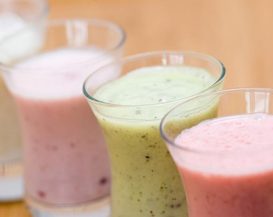 After dusting off the ol' blender a few months ago, you've been proudly making smoothies instead of downing enormous bowls of cereal or bagels for breakfast. You expected the pounds to just fall off, but they're not. Here are some reasons why: Mistake No. 1: Your Smoothie Skimps on Fiber Fiber is as close to a magic weight-loss pill as you're going to get. It's what fills you up to prevent hunger so you end up eating less later in the day. Fruits do offer fiber—but only if you pick the right ones. Bananas are one of the most common smoothie ingredients, but half of one only offers 1.4 grams of fiber. Try to get at least 10 grams in your smoothie by adding fiber-rich foods such as berries, kale (it has twice as much fiber as spinach), avocado, kiwi, pear, beans, flax meal, chia seeds, and certain plant-based protein powders. Mistake No. 2: Your Recipe Lacks Protein Your smoothie may be green as can be, but that doesn't mean it contains the protein you need to sustain your energy throughout the day. To resist the urge to snack on high-calorie pick-me-ups, aim for at least 10 grams of protein per smoothie. Some good sources: milk or soy milk (instead of lower-protein almond milk), Greek yogurt (it has more protein than the regular kind), cottage cheese, protein powder, soft tofu, beans, nuts, or nut butter. If you need some recipe ideas, check out these five high-protein smoothies. Mistake No. 3: You Overdo It on the Fruit Sipping on a cold, creamy smoothie made solely from a variety of fruits is much healthier than downing a doughnut. But while fruits are full of fiber and nutrients, they aren't void of calories. So when you fill your blender with five different fruits, you could end up with a smooth that clocks in at more than 500 calories. Since fruits are full of natural sugars, your body also metabolizes them quickly, leaving you with hunger pangs within an hour. To avoid this issue, pair your fruit with a protein source such as milk, soy milk, yogurt, protein powder, soft tofu, beans, nuts, or nut butter. Mistake No. 4: You Add Extra Sweeteners One tablespoon of honey or maple syrup will tack on over 60 extra calories—and you don’t need it if your smoothie contains naturally-sweet fruit. Of course, added sweeteners are also found in flavored yogurt, fruit juice, sweetened milks, and fruits canned with syrup. So avoid the extra sugars, and experiment with using plain yogurt and unsweetened soy or almond milk instead. Trust us, your taste buds will get used to it. PUBLISHED: APRIL 15, 2014 | BY JENNY SUGAR FOR POPSUGAR FITNESS PHOTO CREDIT: KATIA VASILEVA/SHUTTERSTOCK |
Details
AuthorKendra Eichler, WLG Coach Archives
January 2018
Categories
All
|
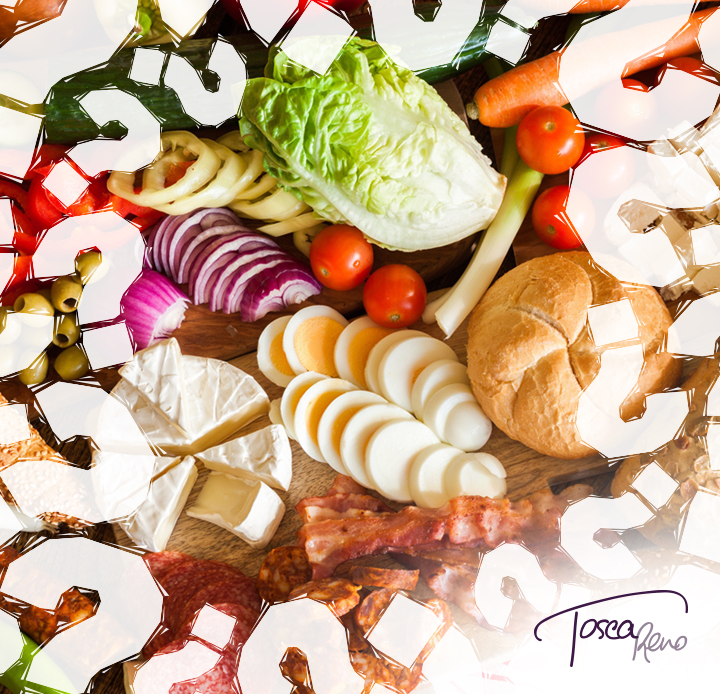

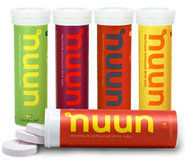
 RSS Feed
RSS Feed